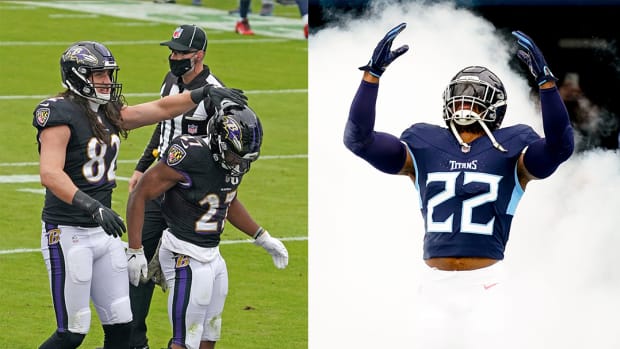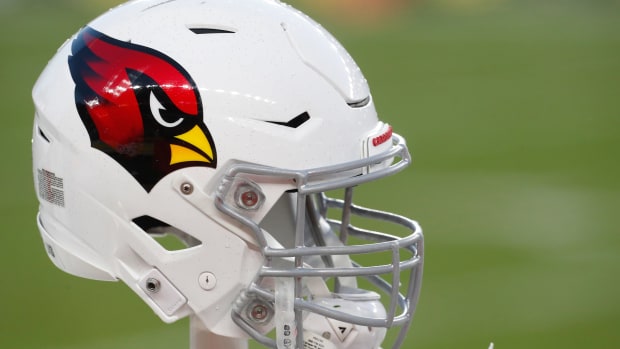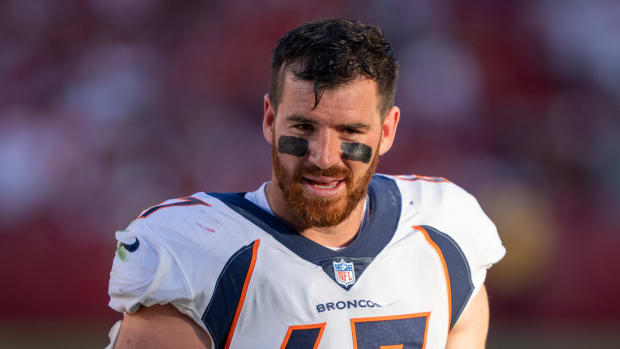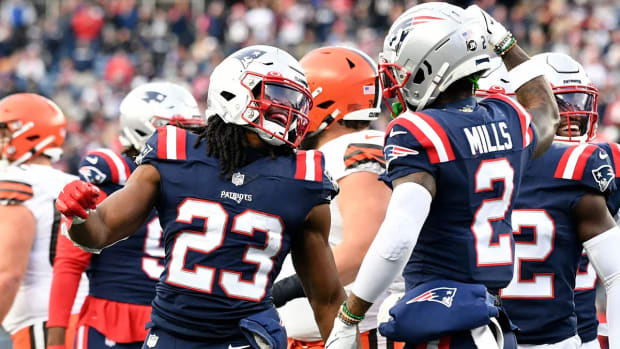Scouting Tampa Bay: A System Built for Jameis Winston
1.Jameis Winston’s sophomore season will be fascinating because: Usually the question with QBs entering Year 2 is whether they can sharpen their understanding of their system and of defenses. But that’s not the concern with Winston, a precocious student of the game. Rather, the question is: can Winston hone his mechanics? As a rookie, they were rough enough to be considered an obstacle to his long-term development. It doesn’t matter if a QB can read the coverage or make audibles if his body can’t keep up with his mind. And, eventually, that player’s body will prohibit his mind from progressing further. Winston must get tighter in his dropback, in his ball release and in his footwork. He currently requires too much time and space in the pocket. The good news: Winston is working with the right instructors (head coach Dirk Koetter; quarterbacks coach Mike Bajakian); he’s shown the toughness to hang in and keep his eyes downfield when the pocket starts to collapse; he’s willing to attack tight windows downfield. The right foundation is there.
• CAMP REPORT: Colder than cold in Tampa Bay
2.Dirk Koetter’s system fits Winston as well as any NFL system fits its quarterback. Even if Winston tightens his mechanics, he’ll never be a quick-twitch thrower. Koetter knows that. And so the Bucs’ passing game is heavy on slower developing downfield route concepts—things like post routes, corner routes, fly patterns and deep digs. Winston’s 13.0 yards per completion ranked third in the league, behind only Cam Newton and Carson Palmer. This vertical approach also fits the measured movement and big frames of wideouts Mike Evans and Vincent Jackson.
3. If you’re going to have this sort of vertical passing game, you need a strong running game. The majority of deep routes come out of running formations. Running formations set up the type of elongated play-action that impacts safeties—the defender you must beat in order to go deep. They also put the extra tight ends and fullbacks in place to help the offensive line hold up longer in pass protection. Last season the Bucs played base personnel (2 RB, 1 TE or 1 RB, 2 TE) with regularity, and according to Football Outsiders, they even put six offensive linemen on the field more than any team except Washington. Expect this to continue.
• DEEP DIVE: The Best Quarterbacks Ever! Or a Reasonable Review of Rookies Mariota, Winston
4. The Bucs may come to regret not drafting or signing a wide receiver. They’re banking on either untested 2015 fifth-rounder Kenny Bell, undrafted second-year pros Donteea Dye and Adam Humphries or on Louis Murphy, coming off an ACL, to be their No. 3. This offense has no speed and quickness at tight end or receiver. That’s also part of the reason the Bucs are a methodical, downfield passing team with a run-heavy approach.
5. Another reason the Bucs need to have a run-based foundation is tailback Doug Martin. No player in the NFL is more adept at maneuvering through small cracks. While most backs in today’s game flourish in space, the more blockers you pack in for Martin, the better he gets.
6. Second-year pro Donovan Smith is the type of left tackle who needs to win early in the down. All left tackles need to win early in the down, of course. But in Smith’s case, it’s magnified. He improved his pass-blocking balance and technique as his rookie season unfolded. When he wins early, those skills are the drivers. But when he doesn’t win early, his lack of twitchy athleticism gets exposed and he can’t recover.
7. The Bucs’ D could feature a sneakily effective pass rush. It’s added five-tool veteran end Robert Ayers and second-round rookie Noah Spence. Ayers could probably be an effective three-technique in certain nickel fronts. The Bucs, however, might be too rich already for him here, assuming Gerald McCoy and Clinton McDonald stay healthier than they did in 2015. There’s also stellar depth up front. Jacquies Smith and Howard Jones are worth 10-12 situational snaps a game. Are any of Tampa’s defensive linemen game-wreckers? Besides McCoy, no. But afforded the luxury of staying fresh in a deep rotation, they’re more than capable of generating pressure in critical passing situations. That wasn’t the case last season.
8.Lavonte David needs to bounce back from a mediocre season. The linebacker did not stand out at all on film until November. He was dominant at times down the stretch, but the Bucs need that from him in all 16 games.
9. If David does bounce back, the Bucs, who last year still ranked second behind only Denver in yards allowed per rush (3.45), will have an outstanding linebacking unit. Second-year middle ’backer Kwon Alexander has the speed you look for, and his awareness improved precipitously as a fourth-round rookie. Incoming veteran Daryl Smith can still play, too—not just in the base 4-3 but also as an alternative option in nickel, where he’s an adept blitzer.
10. New defensive coordinator Mike Smith will employ more creative pass-rush concepts and coverage changeups than last year’s defensive signal-caller, head coach Lovie Smith. And that’s a good thing; last year this D allowed completions on an NFL worst 69.9% of passes against them. Mike Smith will still keep Lovie’s 4-3 zone foundation, but the first-round selection of cornerback Vernon Hargreaves suggests the Bucs want to play more man coverage. That will take time, however: the rest of their defensive backs are average at best.
Question? Comment? Let us know at talkback@themmqb.com




































